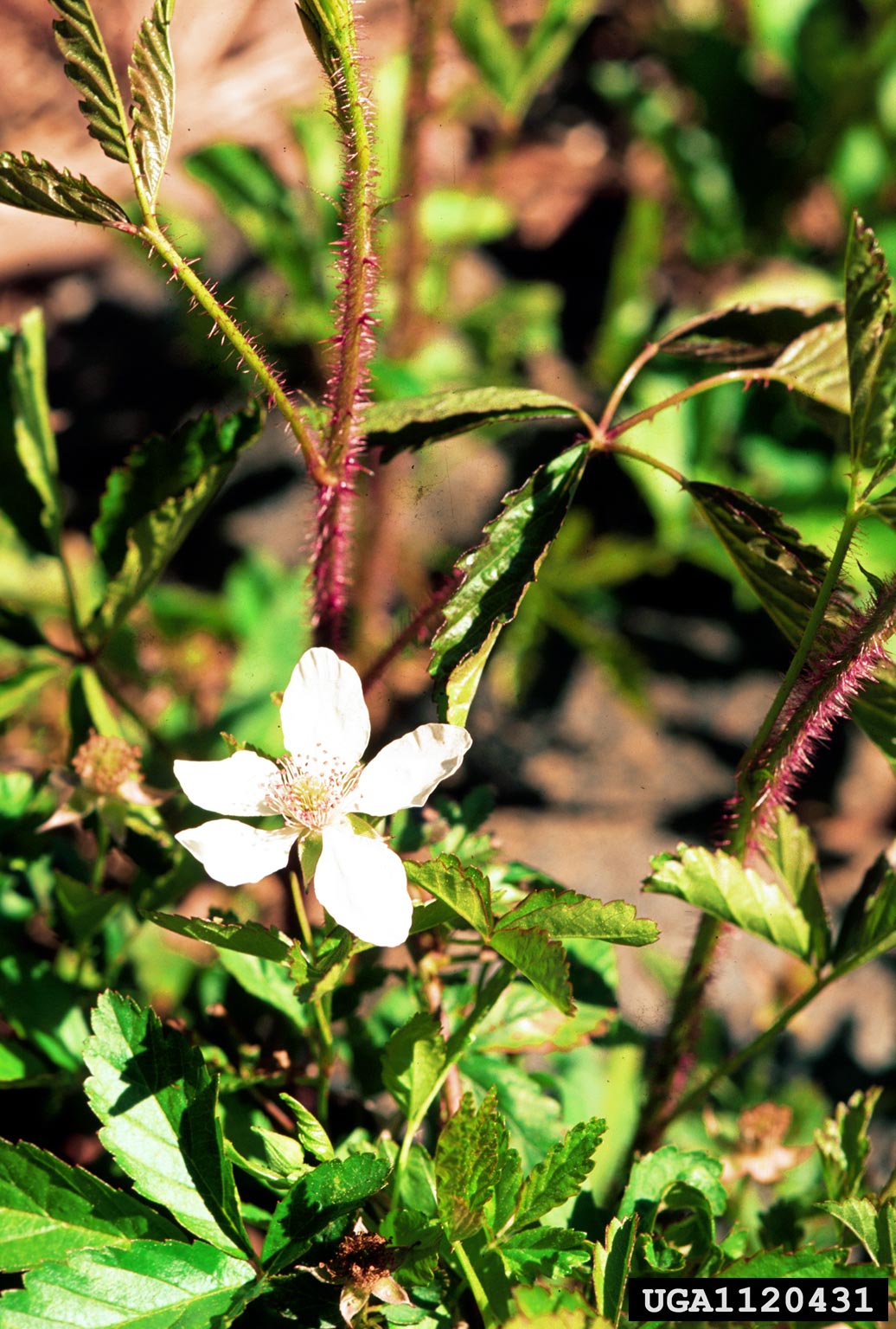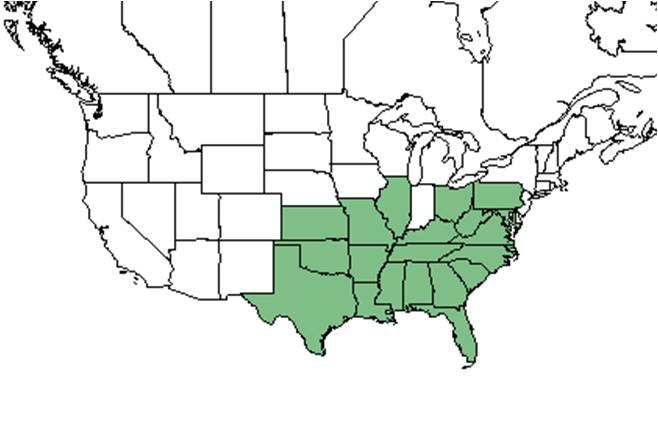Rubus trivialis
| Rubus trivialis | |
|---|---|

| |
| Photo by James H. Miller & Ted Bodner, Southern Weed Science Society, Bugwood.org | |
| Scientific classification | |
| Kingdom: | Plantae |
| Division: | Magnoliophyta - Flowering plants |
| Class: | Magnoliopsida – Dicotyledons |
| Order: | Rosales |
| Family: | Rosaceae |
| Genus: | Rubus |
| Species: | R. trivialis |
| Binomial name | |
| Rubus trivialis Michx. | |

| |
| Natural range of Rubus trivialis from USDA NRCS Plants Database. | |
Common name: Southern dewberry
Contents
Taxonomic notes
Synonym: Rubus lucidus Rydberg
Description
A description of Rubus trivialis is provided in The Flora of North America.
Distribution
Ecology
Habitat
R. trivialis has been found in coastal hammocks, swamp edges, tidal marshes, longleaf pinelands, longleaf pine-palmetto pastures, Red-Gum-Magnolia stands, river floodplains, slash pine savannahs, and pine flatwoods.[1] It is also found in disturbed areas including along roads, waste fields, and along railroads.[1]
Associated species: Clematis crispa, Carex hyalinolepis, Scirpus fluviatilis, Salix spp., Polyugonum amphibium, Diospyros virginiana, and Cephalanthus occidentalis.[2]
Phenology
R. trivialis has been observed to flower from February to May with peak inflorescence in March.[3]
Seed dispersal
This species is thought to be dispersed by consumption by vertebrates.[4]
Fire ecology
Populations of Rubus trivialis have been known to persist through repeated annual burning.[5]
Herbivory and toxicology
Rubus trivialis has been observed at the Archbold Biological Station to host bees from the Halictidae family such as Lasioglossum placidensis and L. puteulanum[6]
Conservation, cultivation, and restoration
Cultural use
Historically, in Appalachia, tea from the roots was used to treat cold symptoms, and the same tea or juice from the fruit was used to cure dysentery.[7]
The entire plant can be consumed in various ways, but the fruits are especially popular to eat fresh or to make jellies and drinks.[8]
Photo Gallery
References and notes
- ↑ 1.0 1.1 Florida State University Herbarium Database. URL: http://herbarium.bio.fsu.edu. Last accessed: June 2021. Collectors: Loran C. Anderson, A. H. Curtiss, Robert K. Godfrey, Robert Kral, Sidney McDaniel, and Hugh O'Neill. States and counties: Florida: Charlotte, Duval, Franklin, Gadsden, Gulf, Hillsborough, Leon, Taylor, and Wakulla.
- ↑ Illinois Natural History Survey accessed using Southeastern Regional Network of Expertise and Collections (SERNEC) data portal. URL: http://sernecportal.org/portal/collections/index.php Last accessed: June 2021. Collectors: Mark A. Basinger and Eric F. Ulaszek. States and Counties: Illinois: Alexander and Madison.
- ↑ Nelson, G. PanFlora: Plant data for the eastern United States with emphasis on the Southeastern Coastal Plains, Florida, and the Florida Panhandle. www.gilnelson.com/PanFlora/ Accessed: 13 DEC 2016
- ↑ Kirkman, L. Katherine. Unpublished database of seed dispersal mode of plants found in Coastal Plain longleaf pine-grasslands of the Jones Ecological Research Center, Georgia.
- ↑ Platt, W.J., R. Carter, G. Nelson, W. Baker, S. Hermann, J. Kane, L. Anderson, M. Smith, K. Robertson. 2021. Unpublished species list of Wade Tract old-growth longleaf pine savanna, Thomasville, Georgia.
- ↑ Deyrup, M.A. and N.D. 2015. Database of observations of Hymenoptera visitations to flowers of plants on Archbold Biological Station, Florida, USA.
- ↑ Korchmal, Arnold & Connie. 1973. A Guide to the Medicinal Plants of the United States. The New York Times Book Company, New York.
- ↑ Fernald, et al. 1958. Edible Plants of Eastern North America. Harper and Row Publishers, New York.